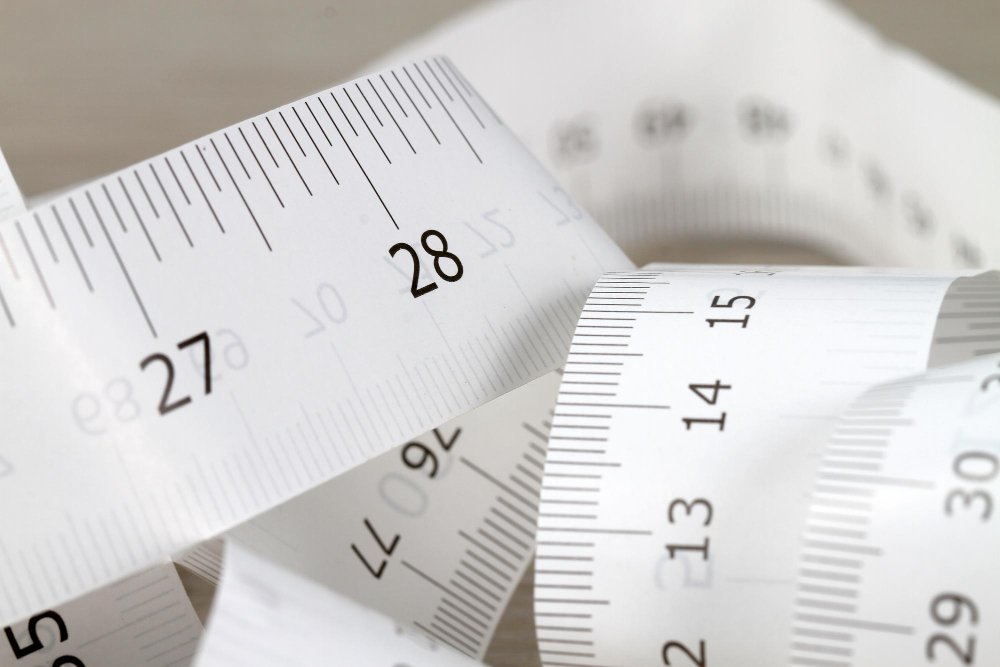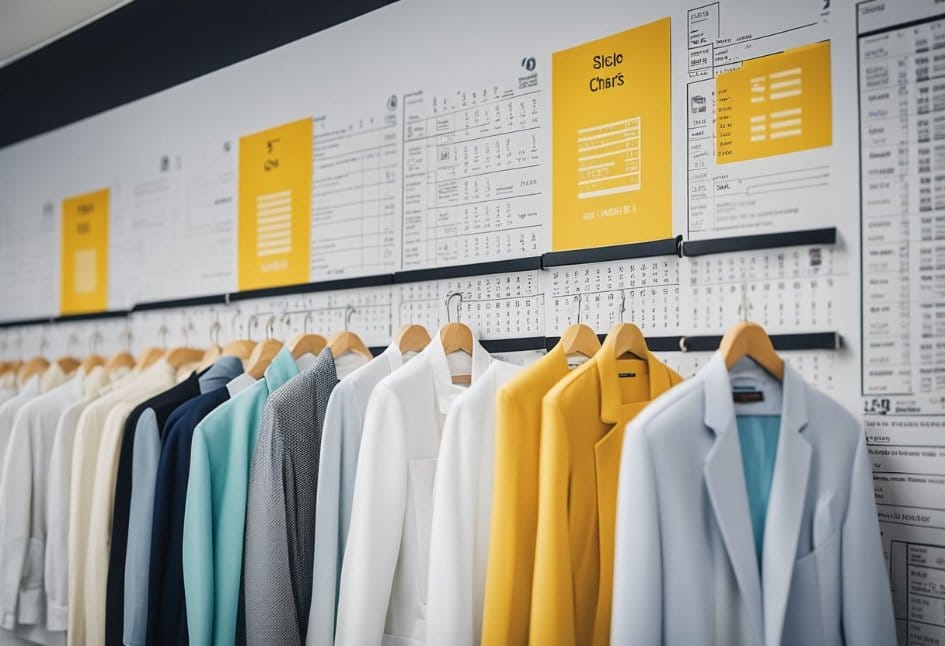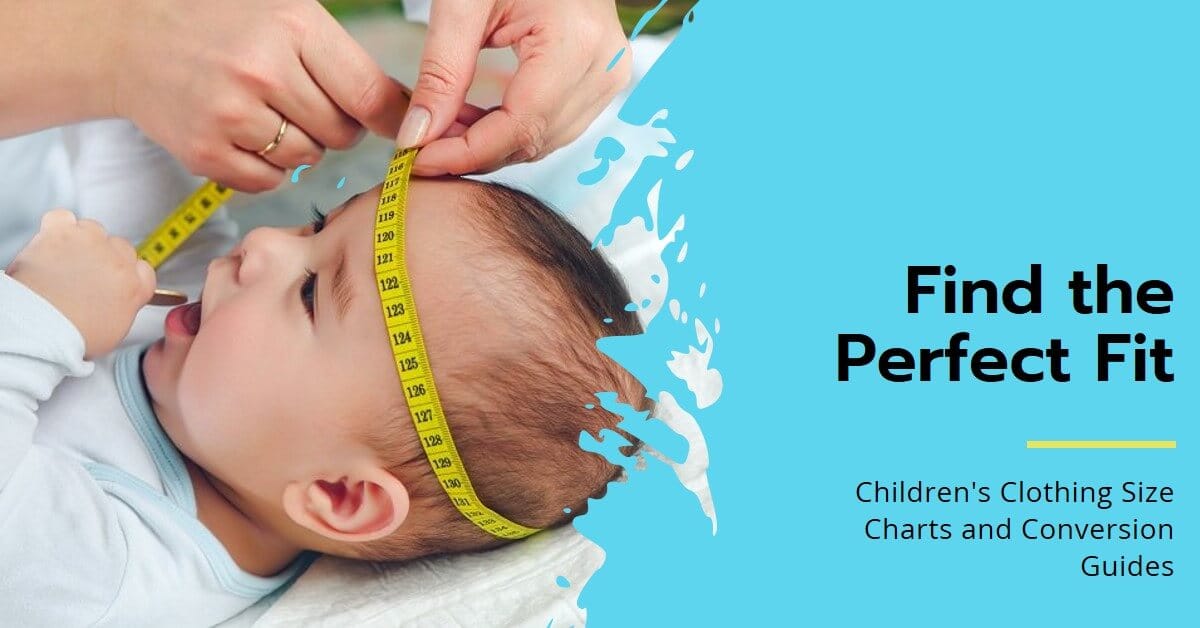A Comprehensive Resource for Parents
Finding the right size for children’s clothing can feel overwhelming. Many parents struggle to understand the different sizing systems across countries and brands. Knowing how to navigate children’s clothing size charts and conversion guides can make shopping easier and help ensure a perfect fit.
Sizing for children often varies significantly between regions like the US, UK, and Europe. This can lead to confusion when trying to purchase items online or from international retailers. Using a reliable size chart helps make informed decisions when choosing clothing for growing kids.
Parents can benefit from understanding how to use size conversion charts and detailed guides to select clothing that fits well. With the right information, they can avoid the hassle of returns and ensure their children are comfortable in their clothes.
On This Page
Key Takeaways
- Knowing children’s clothing sizes can simplify shopping.
- Size conversion charts help match international sizes.
- Detailed guides assist in selecting the right fit for children.
Understanding Children’s Clothing Sizes

Children’s clothing sizes can often be confusing due to the various systems in place. Understanding how sizes correlate with a child’s age and growth patterns is essential for selecting the right fit.
Age-Based Sizes and Growth Spurts in Children
Children’s clothing sizes are typically based on their age. For instance, a size 6 is often suitable for a six-year-old child. However, individual growth rates can vary significantly. Some children may experience rapid growth spurts, making it important to consider height and weight alongside age.
Sizes can be broken down into categories:
- Toddler Sizes: Generally for ages 2 to 6 years.
- Children’s Sizes: Typically range from 7 to 16 years, adjusted for height.
- Tween to Teen Sizes: Some brands offer sizes up to 20 years for older youths.
Parents should measure their child’s height and weight frequently. This helps ensure they select sizes that accommodate current growth.
Size Guide for Boys and Girls
Boys’ and girls’ clothing sizes often differ in terms of fit and style. Generally, boys’ sizes may come in letters (XS, S, M) or numbers (5, 6, 7). Girls’ sizes also use similar letters and numbers but may include specifying cuts for dresses, skirts, and tops.
Here’s a brief size guide:
| Size | Boys (Age) | Girls (Age) |
|---|---|---|
| XS | 5-6 years | 5-6 years |
| S | 6-7 years | 6-7 years |
| M | 8-10 years | 8-10 years |
| L | 12-14 years | 12-14 years |
Many children shop in the same size category as their peers. It helps to consider personal fit preferences when choosing clothing. Special care should be taken with formal wear, swimwear, and sports gear as these may have unique sizing requirements.
Size Conversion Charts for Children
Understanding size conversion charts is essential for finding the right fit for children’s clothing. Different countries have varying sizing standards. This section will detail the key differences between US, UK, Australian, and European sizes and provide insight into international size conversion.
US, UK, and Australian Sizes
In the US, UK, and Australia, children’s clothing sizes typically relate to age but can vary significantly. For example:
- US Sizes: A size 6 is usually for a 6-year-old. Sizes can also include a “T” for toddlers.
- UK Sizes: These sizes often align with age as well, but there may be differences.
- Australian Sizes: Similar to US and UK, Australian children’s sizes are based on age and height.
For younger children, sizes may look like this:
| US Size | UK Size | Australian Size |
|---|---|---|
| 2T | 2 | 2 |
| 4 | 4 | 4 |
| 6 | 6 | 6 |
Understanding these conversions helps parents select the right size across these regions.
European Sizes and International Conversion
European sizes are generally based on the child’s height in centimetres. This differs from the age-based systems used in other regions. For example:
- A child size 12 in Europe usually corresponds to a height of about 128-140 cm.
- European sizes often appear slimmer than US or UK sizes.
When converting sizes internationally, it is helpful to use a size conversion chart. Here’s an example of common conversions:
| US Size | European Size (cm) |
|---|---|
| 6 | 116-122 |
| 8 | 128-134 |
| 10 | 140-146 |
Using these charts ensures that children wear clothing that fits well, regardless of where it is purchased. Always refer to specific size guides for accurate measurements.
Detailed Size Guides

Understanding children’s clothing sizes can help parents choose the right fit for their kids. Size charts provide a clear breakdown of toddler and youth sizes, making shopping easier.
Toddler Sizes Explained
Toddler sizes generally cover children aged 1 to 3 years. They are typically labelled as 2T, 3T, and so on. The “T” denotes toddler sizing, which is important for accurate fitting.
| Size | Height (cm) | Weight (kg) |
|---|---|---|
| 2T | 86-92 | 12-14 |
| 3T | 92-98 | 14-16 |
| 4T | 98-104 | 16-20 |
When selecting toddler clothing, height is crucial. Many brands offer kids’ size conversion charts for different regions, including US, UK, and EU sizes. It’s also worth noting that sizing may vary slightly by brand, so trying on the clothes remains a good practice.
Youth Sizes and How They Differ
Youth sizes cater to older children, usually from ages 4 to 12. They are labelled as Youth Small, Medium, Large, and Extra Large.
Here’s a quick look at youth size measurements:
| Size | Height (cm) | Weight (kg) |
|---|---|---|
| Youth Small | 110-125 | 18-27 |
| Youth Medium | 125-140 | 27-36 |
| Youth Large | 140-155 | 36-45 |
| Youth XL | 155-170 | 45-54 |
The youth medium size often fits children aged 8 to 10, with sizes varying based on brand. Accurate fitting becomes essential for youth clothing as children become more active and need comfortable apparel that fits correctly.
What size is 110 in children’s clothes in the UK?
Size 110 in children’s clothing typically corresponds to an age range of 4-5 years in the UK. This is based on a child’s height in centimetres (110 cm), making it a useful guide for taller children in this age bracket.
How do you read kids’ clothing sizes?
Kids’ clothing sizes are usually based on age or height, but they can vary by brand and region. In the UK and Europe, sizes are often measured by height in centimetres (e.g., size 110 equals 110 cm), while in the US and UK, clothing sizes are typically indicated by age (e.g., age 4-5).
What are UK kids’ sizes?
UK kids’ sizes are usually indicated by age in years. Here’s a general guide:
• Newborn: 0-3 months
• Baby: 3-6, 6-9, 9-12 months
• Toddler: 1-2 years, 2-3 years
• Child: 3-4, 4-5, 5-6 years, and so on.
For older children, sizes may shift to numeric values (e.g., 7-8 years, 9-10 years).
What size is 110cm in children’s clothes?
A child measuring 110 cm tall usually fits into size 110, which corresponds to an age of 4-5 years. This size is based on the height of the child rather than age, which ensures a better fit, particularly for taller children.
How do kids’ sizes go in order?
Children’s clothing sizes typically progress by age or height. Here’s a simplified outline:
• Newborn (NB)
• 0-3 months
• 3-6 months
• 6-9 months
• 9-12 months
• 1-2 years, 2-3 years, and so on up to 14+ years.
In height-based sizing, sizes often range from 50 cm for newborns to 160 cm for older kids and teens.
What’s the difference between 0-3 months and 3 months clothes?
“0-3 months” is meant to fit babies from birth up to 3 months, while “3 months” clothing is often designed for babies starting around the 3-month mark. The size difference is subtle but 3 months clothes generally offer a bit more room for growth.
How do you explain size to a child?
When explaining size to a child, it’s easiest to talk in terms of numbers they understand, like age. For example, you can say, “This shirt is made for kids who are 4 years old, just like you!” Or, if you’re using height-based sizing, relate it to their actual height, like, “Since you’re 110 cm tall, this is the size that will fit you best!”
What size is a children’s 10-12?
In most UK brands, size 10-12 typically fits children between 10 and 12 years old. This size often corresponds to children with a height of around 140-152 cm.
How do you estimate a child’s size?
To estimate a child’s size, it’s important to consider both age and height. The height-based sizing system (e.g., 110 cm) is often more reliable than age-based sizing, as children’s growth rates can vary significantly. You can also factor in their build, as slim or broader kids might need different fits within their age bracket.
How do you measure a child’s size?
To measure a child’s size, use a soft tape measure:
• Height: Measure from the top of their head to the floor while they stand straight.
• Chest: Wrap the tape around the widest part of the chest, just under the arms.
• Waist: Measure around the natural waistline (above the belly button).
• Hips: Measure around the fullest part of the hips.
• Inseam: Measure from the crotch to the bottom of the leg, typically for trousers.
What is the explanation for size?
In clothing, “size” refers to the set of measurements that determine how a garment will fit. For children, this usually involves a combination of height, weight, and sometimes chest, waist, and hip measurements. Different brands may have slightly different sizing standards.
Is 3 months and 3-6 months the same size?
No, they are not the same size. “3 months” clothing is typically designed for babies who have reached around 3 months of age, while “3-6 months” covers a wider range and is generally larger to accommodate growth up to 6 months.
Can you put a newborn in 0-3 month clothes?
Yes, you can. Many newborns will fit into 0-3 month clothes from birth, but it depends on their size. Some babies are smaller and will fit newborn or “first size” clothes better, while others may be born bigger and go straight into 0-3 months.
What size clothes do babies stay in the longest?
Babies tend to stay in 0-3 months and 3-6 months clothing the longest, as these sizes accommodate a wider range of growth. The growth rate can slow a bit after the newborn phase, which is why these sizes often last longer.

